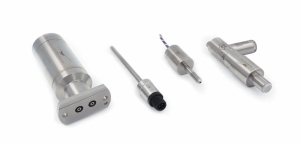Since 1974 KELLER has been harnessing the potential of piezoresistive sensor technology to see numerous challenging projects through to completion. In all of these projects, a mutual exchange of expertise was essential to their success. Sharing Keller’s knowledge is what enables companies to find the best sensor solution. Applications that may appear trivial at first glance but upon closer analysis can prove highly complex. By taking the actual usage conditions of the sensor into consideration right from the outset, major improvements in effectiveness and durability can be achieved, from fill-level sensors in rainwater tanks to ultra-precise laboratory instruments and even rocket interdependencies.
Measuring ranges & performance
Keller engineers and developers are a vital piece of the puzzle. Whether an existing product can be used, possibly with suitable modifications, or a new development is needed depends entirely on the customer's project. Together, Instrotech who handle KELLER sensors in South Africa and KELLER look at the requirements to determine the properties needed for flawless measurement. Armed with many years of experience, the company, take a close look at all the factors involved and their various
“First of all, we define the basic sensor specifications such as overall measuring range, accuracy, calibration to specific measuring points and units of pressure, or scaling of the output signal. Products with a digital signal output have additional factors that also need to be determined, such as sampling rate or signal resolution. The values defined at this stage form the starting point for selecting component”, Bernhard Vetterli, KELLER’s Technical Director said.
Perfectly tuned to the ambient conditions
Another crucial requirement is considering the ambient conditions. Not only does this increase the service life of the sensor, but it is also an essential prerequisite for correct measurements. If the pressurised system operates with a large overpressure or with dynamic loads, the sensor design must be optimised for these demands. With some applications or neighbouring system parts, there is a risk of signal distortion or component failure due to vibration or shock. Temperature also has a major impact on all materials and their resistance. Complications can be caused not just by extreme temperature values but also by rapid changes in temperature. Another equally important factor is chemical resistance. The materials used for housings and seals must be carefully selected, otherwise they risk being damaged by aggressive measuring media. External factors such as petrol fumes, UV radiation, salt water or even microorganisms can also cause problems. It is therefore essential that all relevant factors be considered. Even finely tuned designs still have limits, and additional protective measures may be needed.
Mechanical Design
When designing a sensor, all the above points must be taken into consideration. A device's performance is heavily influenced by the sensor design, from the choice of the sensor chip and coupling medium through to the materials and production techniques used. In addition, customers may have particular requests concerning shape and size, pressure connections and so on. And of course, any specific requirements about the area of application must be complied with, along with all the applicable legal regulations and standards.
David Bollinger, Head of Mechanical Engineering at KELLER says, “Customer-specific constructions are an important driver of innovation and inspire us to develop new ideas and approaches to finding solutions. Ultimately, new findings are always incorporated into the further development and improvement of our existing product range.”
Electronics & Configuration
The main function of the electronics is to prepare the measurement signal, as well as possibly to save it and output it via a suitable interface. Customers can also request that application-specific calculations be integrated in the firmware, or ask for special device and software configurations. Once again, other requirements depend on the environment, such as extended lightning protection, EMC or explosion protection. Intrinsically safe products can also be specially configured to match the parameters of the customer's overall system.
Electrical Interfaces & Connections
Digital interfaces can be configured for specific communication protocols, or modified to suit the customer's needs. Meanwhile, analogue interfaces also continue to play a vital role in sensor technology. The success of a project hinges on the exchange of information at the interfaces.















